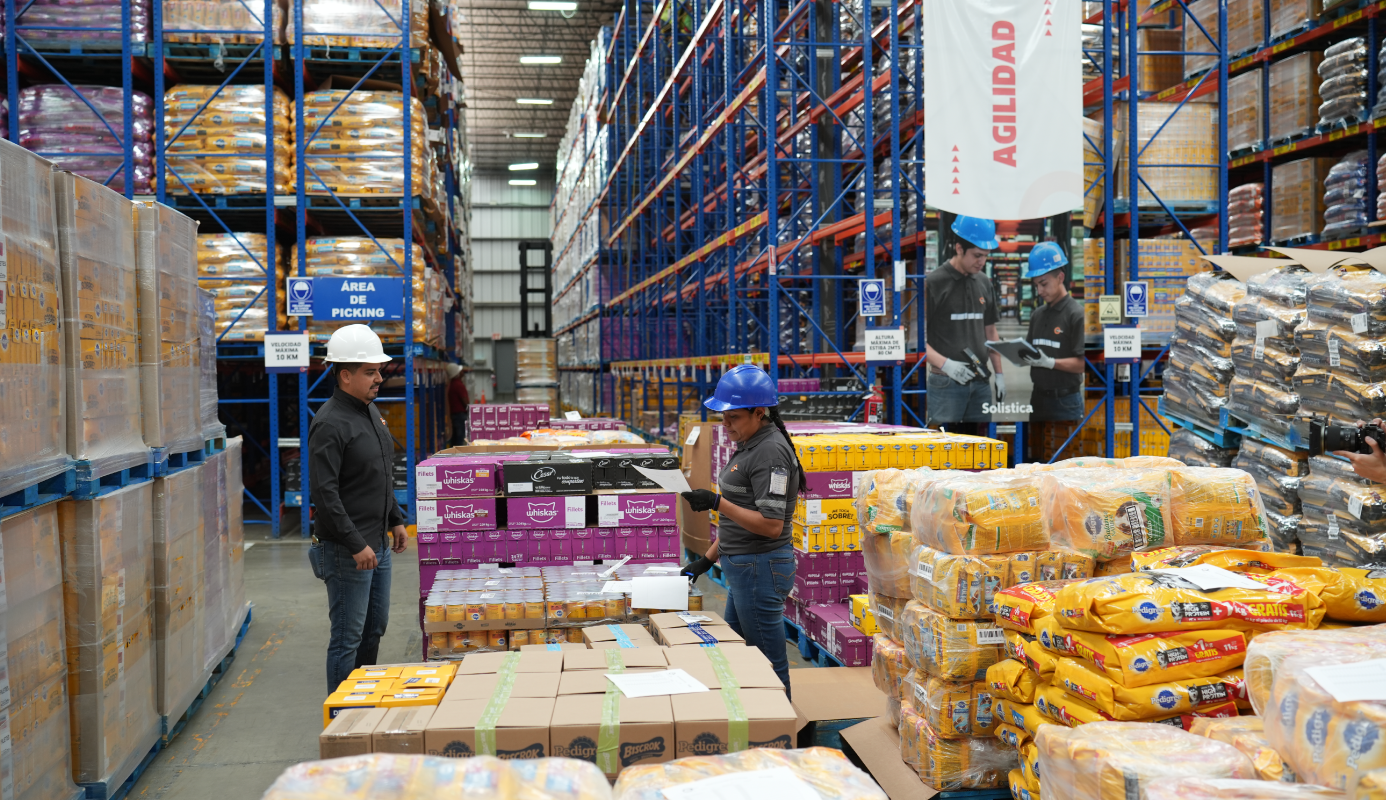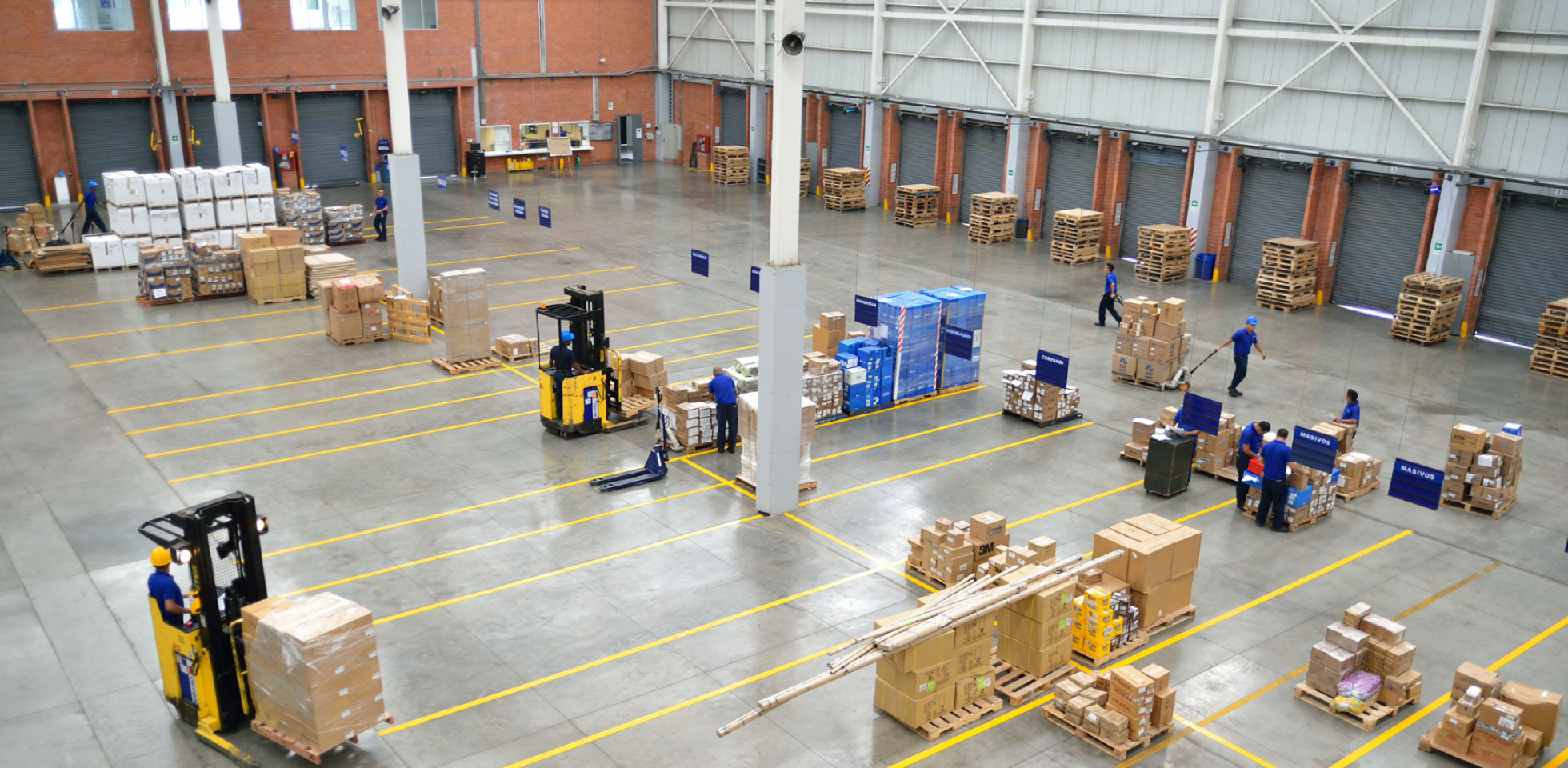Managing a warehouse is a complex task that ranges from inventory storage and control to supply planning. In the constant pursuit of improving the efficiency and reliability of the supply chain, it is crucial to identify and overcome the most frequent challenges in inventory management. In this article, we will explain the main challenges and present key actions to solve them, with the aim of achieving more efficient and customer-satisfactory warehouse management.
 Excess Inventory: Optimizing the Supply Chain
Excess Inventory: Optimizing the Supply Chain Excess inventory can become an unnecessary expense instead of a source of income. To address this challenge, an effective strategy is to use omnichannel warehouses instead of having separate warehouses per channel. This reduces total inventory in the supply chain, provides greater visibility of product availability, and simplifies order preparation and reverse logistics. By implementing this solution, companies can reduce costs and improve operational efficiency.
Lack of Space: Maximizing Storage Efficiency
Lack of space in a warehouse can lead to a disorganized accumulation of goods, which can cause workplace accidents, loss of time, and deterioration of product quality. To make the most of available space, it is essential to improve storage systems, preset selection routes, and planogram designs for spaces and shelves, especially in the receiving area. By maximizing vertical space, greater efficiency is achieved in picking and packing operations, as well as a reduction in operational and inventory costs.
Poor Traceability and Connectivity: Leveraging Current Technology
Traceability and connectivity are key elements to ensure effective control of goods along the supply chain. Current technology offers solutions that allow tracking the origin of products, identifying those responsible for each stage of the process, and collecting relevant data. However, the challenge lies in recording each step of the chain and efficiently leveraging this information. The use of software, applications, and connectivity tools inside and outside the warehouse can maximize visibility and facilitate supply chain planning and execution. The integration of systems such as Automated Storage/Retrieval Systems (AS/RS) with Warehouse Management Systems (WMS) simplifies and makes transparent the order fulfillment process.
Excessive Procedures: Simplifying Processes for Efficiency
Unnecessary processes such as rework, reprocessing, and excessive handling can generate inefficiencies and affect customer experience, revenue, and margins. The elimination of obsolete or unnecessary steps streamlines processes and improves customer experience. To address this challenge, it is crucial to identify and eliminate redundant and obsolete procedures. Through a thorough review of processes, operations can be streamlined and simplified, leading to a significant improvement in efficiency and bottom-line results.
Incorrect Time Management: Optimizing Order Preparation
Lack of precise knowledge about the location of products can cause delays in task execution and affect the entire supply chain. To solve this challenge, it is essential to optimize order preparation and inventory location. The use of automation tools, such as barcode technology, RFID tags, and order management systems, provides real-time information about inventories and locations, avoiding repetitive activities and significantly reducing execution times.
Inaccurate Inventory and Assortments: Precision in Inventory Management
Having excessive or insufficient inventories can generate additional storage costs or loss of sales. This challenge often stems from errors in manual registration and lack of proper tracking of goods. To overcome this challenge, it is recommended to implement an inventory management software that allows creating precise and transparent assortments, ensuring that invoices match purchase orders. Precise inventory management is essential to optimize the supply chain and ensure efficient operation.
Delays in Collection: Improving Collection Logistics
Optimizing the collection process and reverse logistics is essential to ensure shorter response times and greater productivity of collaborators. To address this challenge, it is recommended to avoid manual SKU entry and use scanners to get an updated inventory reading. By implementing a warehouse management system, more efficient collection routes can be planned and overall operational performance can be improved.
Damaged Products: Ensuring the Integrity of the Merchandise
Damaged products represent an additional cost in storage operations. To prevent this problem, it is suggested to use pallets that are suitable for stacking, loading, and safely wrapping products. Also, it is important to have safe, well-lit, and clean facilities, not only to protect collaborators but also to safeguard the integrity of the merchandise.
Not Being Prepared for Demand: Accurate Forecasting
Product demand can be volatile due to internal and external factors such as seasons, weather, and economic conditions. To avoid problems of excess or lack of inventory, it is essential to have timely information to accurately forecast demand. This allows adjusting inventory levels accurately and avoiding unnecessary storage costs or loss of sales.
Human Capital Issues: Training and Staff Productivity
The human factor plays a crucial role in warehouse management. Lack of training and lack of employee integration can delay the supply chain, affect operational efficiency, and generate additional costs due to rework. It is essential to provide constant training to collaborators involved in the logistics department and ensure they are familiar with the key performance indicators (KPIs) relevant to warehouse management. Evaluating and improving staff productivity throughout the supply chain is essential to maintain an efficient workflow and minimize errors.
It’s important to note that each company has specific logistical needs, so it’s advisable to seek the support of logistics-specialized companies, like Solistica, which have experience in warehouse management and can provide personalized advice for the automation of logistical processes and the optimization of warehouse administration. These companies can help make informed decisions and turn the supply chain into a competitive advantage.






